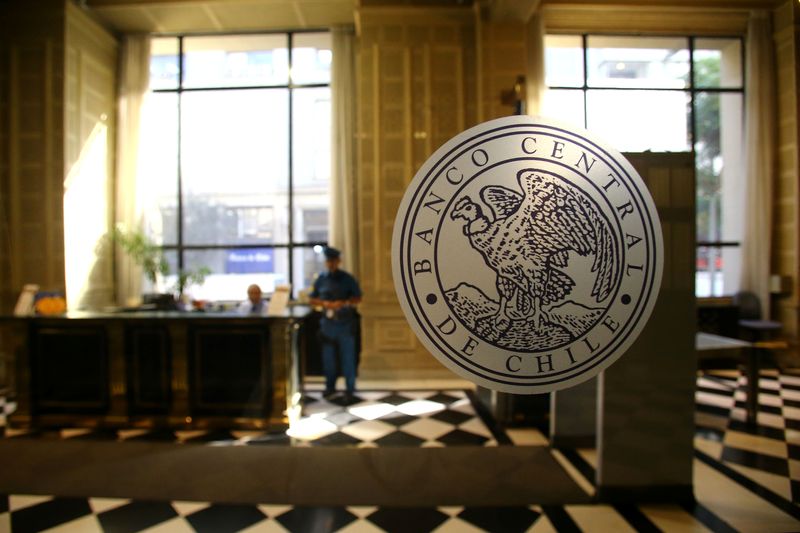Chile’s March inflation hits 1.1% as cenbank sees prices taking longer to fall
2023.04.06 09:42

© Reuters. FILE PHOTO: The emblem of the Chile’s Central Bank is seen at its headquarters in Santiago, Chile March 29, 2018. REUTERS/Ivan Alvarado
SANTIAGO (Reuters) – Consumer prices in Chile rose 1.1% in March, data from statistics agency INE showed on Thursday, roughly in line with market forecasts as the world’s largest producer battles stubbornly high inflation.
The March figure, which reversed an unexpected 0.1% drop seen in February, took 12-month inflation to 11.1%, slowing down from 11.9% in the previous month but still well above the central bank’s target range of 2% to 4%.
Economists polled by Reuters had expected a 1.0% rise last month.
The fresh data comes as Chile’s central bank earlier this week kept its benchmark interest rate unchanged at 11.25%, but warned that the economy was adjusting more slowly than expected and inflation was taking longer to come down.
The monetary authority has been highlighting elevated core prices, and in a report on Wednesday noted that even though inflation is expected to keep declining in coming quarters, it would converge at its 3% goal only toward the end of 2024.
“We recognize that the central bank has maintained a hawkish view and will likely keep the benchmark rate at its current level until it sees downside surprises in CPI inflation prints,” economists at Scotiabank said in a note to clients.
The March prices rise was mainly driven by higher education and leisure costs at the beginning of the school year, INE said, as a total nine of 12 groups surveyed – including the key food and non-alcoholic beverages one – posted monthly increases.
Transportation costs were the silver lining, slipping 0.7% in the month, the agency added.
Even so, Pantheon Macroeconomics’ chief Latin America economist Andres Abadia said the near-term outlook remained benign, with headline inflation falling in response to tight conditions while core pressures, although still sticky, were seen easing in coming months.
“We think that policymakers will soften their tone soon, and will open the door to rate cuts in late Q2 or early Q3, once core inflation starts to head south,” he said.








